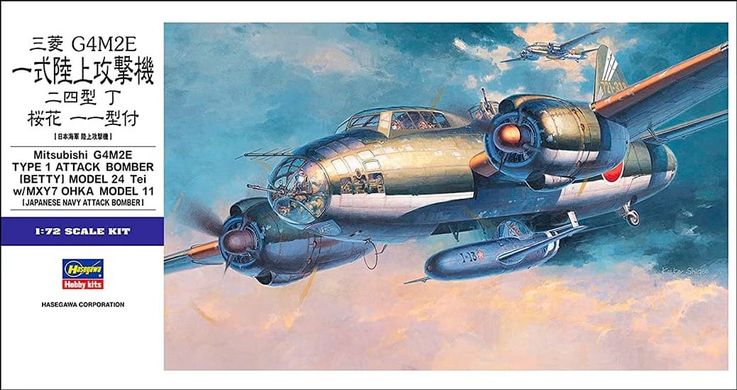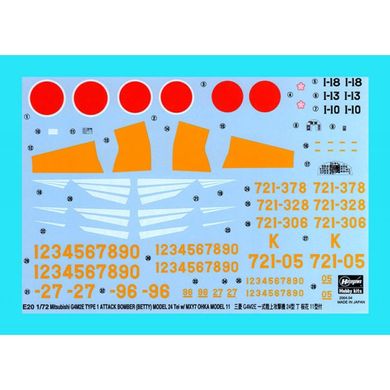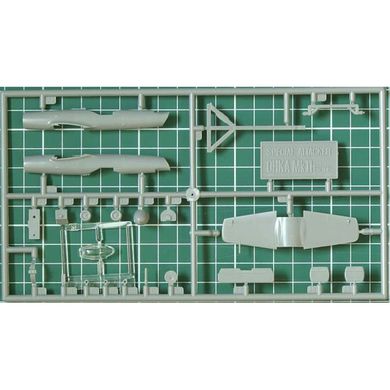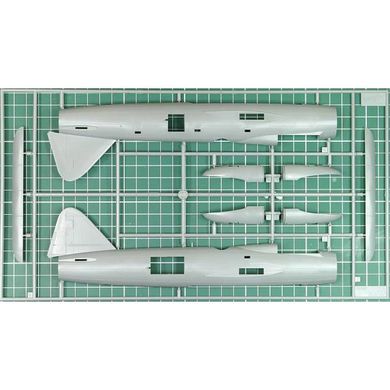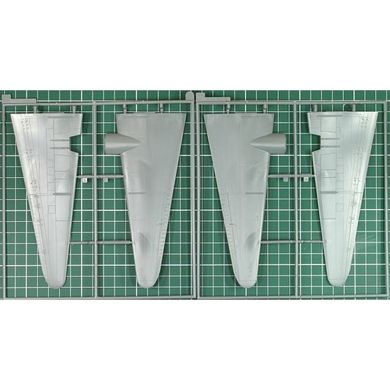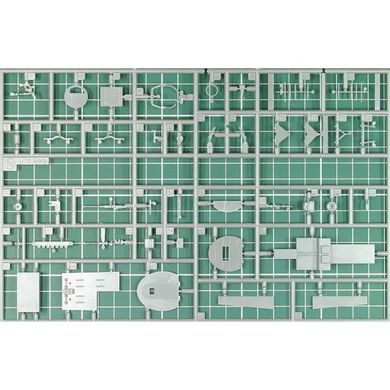The Mitsubishi G4M Hamaki (Japanese Cigar) is a Japanese twin-engine long-range land-based bomber and torpedo bomber with a metal structure of the Second World War. The Soviet nickname of this aircraft is "Betty". The prototype flew in October 1939, and entered service in 1941. During the war, five modifications of the aircraft were created: G4M1 Model 11, G4M2 Model 22, G4M2a Model 24, G4M3 Model 34 and G6M1. The G4M1 and G4M2a versions became the most popular. The mentioned versions differed from each other, in particular. power plants, airborne armament and, starting with the G4M3 version, self-sealing fuel tanks. The most amazing version of the development was the G4M2e, which was adapted to drop the pilot's Ohk MXY-7 suicide flying bomb. G4Ms of all versions served in the Pacific throughout the conflict. Aircraft of this type took part in min. in the sinking of the battleships HMS Repulse and HMS Prince of Wales, in the battles in the Philippines and New Guinea, were very intensively used in the Battle of Hudalkanal. Since 1943, their effectiveness has decreased, which was caused by the use of new fighters by the Americans, min. F-6 and R-47. Admiral Isorok Yamamoto died on board such an aircraft on April 18, 1943. Technical data (G4M1 variant): length: 19.97m, wingspan: 24.89m, height: 4.9m, maximum speed: 428km/h, rate of climb: 9.17m/s, maximum range: 2850km, maximum armament ceiling: stationary - 4 machine guns type 92, 7.7 mm and one gun, type 99, 20 mm, hanging - up to 858 kg of bombs or torpedoes of this mass. were very intensively used in the battle of Gudalkanal. Since 1943, their effectiveness has decreased, which was caused by the use of new fighters by the Americans, min. F-6 and R-47. Admiral Isorok Yamamoto died on board such an aircraft on April 18, 1943. Technical data (G4M1 variant): length: 19.97m, wingspan: 24.89m, height: 4.9m, maximum speed: 428km/h, rate of climb: 9.17m/s, maximum range: 2850km, maximum armament ceiling: stationary - 4 machine guns type 92, 7.7 mm and one gun, type 99, 20 mm, hanging - up to 858 kg of bombs or torpedoes of this mass. were very intensively used in the battle of Gudalkanal. Since 1943, their effectiveness has decreased, which was caused by the use of new fighters by the Americans, min. F-6 and R-47. Admiral Isorok Yamamoto died on board such an aircraft on April 18, 1943. Technical data (G4M1 variant): length: 19.97m, wingspan: 24.89m, height: 4.9m, maximum speed: 428km/h, rate of climb: 9.17m/s, maximum range: 2850km, maximum armament ceiling: stationary - 4 machine guns type 92, 7.7 mm and one gun, type 99, 20 mm, hanging - up to 858 kg of bombs or torpedoes of this mass.















